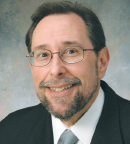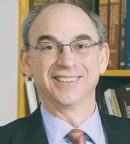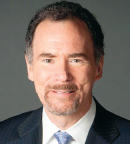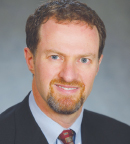The traditional three-phase clinical trial process for testing new drugs does not necessarily make sense when it comes to targeted therapies, according to many experts, including regulators, academic researchers, industry chief executive officers, and patient advocates alike. Instead of three separate phases, continuous or “seamless” trial designs may be more efficient in getting highly effective new drugs to the patients who can benefit.

Richard Schilsky, MD
However, seamless trials pose their own challenges. “The same basic information we’ve always needed to know, we still need to know,” said Richard Schilsky, MD, Senior Vice President and Chief Medical Officer of ASCO, who chaired a recent workshop on the topic. Information on dose, schedule, patient population, and toxicities will always be essential, he said, opening the meeting.
“But the issue we’re trying to reimagine today, in a sense, is when do we acquire all that information in the drug-development process, how do we acquire it, and how quickly can we apply this information?”
The Drug Development Paradigm in Oncology, hosted by the National Cancer Policy Forum in collaboration with the Forum on Drug Discovery, Development, and Translation of the National Academies of Sciences, Engineering, and Medicine, brought together multiple stakeholders to address the opportunities and challenges of seamless trials and offer strategies to collect information across the cancer therapy life cycle.
Opportunities…

Traditional phase I, II, and III trials cannot provide enough information, as cancer therapies are splintered into multiple subgroups and treatment categories.— Janet Woodcock, MD
Tweet this quote
One prime example of a highly effective drug developed seamlessly is pembrolizumab (Keytruda), which targets the programmed cell death ligand 1 (PD-L1). This immunotherapy showed high efficacy in its earliest trial among patients with melanoma. Rather than conclude that trial and start on a phase II trial, investigators added expansion cohorts, first to test the drug in patients with non–small cell lung cancer and then to test lower doses in both groups and also to provide training and validation sets for the PD-L1 expression test. More cohorts were added as more information was collected. Several years later, the drug was approved for advanced melanoma without a randomized, controlled trial.
That was in 2014. Now there are more than 40 active, first-in-human cancer trials that are using this seamless strategy, according to members of the U.S. Food and Drug Administration (FDA), writing in The New England Journal of Medicine.1
One reason for the increase in seamless trials is their usefulness in evaluating a targeted drug in many subgroups of patients. “Traditional phase I, II, and III trials cannot provide enough information, as cancer therapies are splintered into multiple subgroups and treatment categories,” said Janet Woodcock, MD, Director of the Center for Drug Evaluation and Research at the FDA, speaking at the workshop. “I don’t think clinical development right now can keep up with the rapidly evolving science.”

Mark Ratain, MD
Although speed is associated with seamless trials, the opportunity for greater efficiency is also important. “A lot of impetus for this meeting is to say how we can get rid of waste,” said Mark Ratain, MD, of the University of Chicago Comprehensive Cancer Center.
Drugs that fail in phase III trials are a source of waste, continued Dr. Ratain. So is identifying the wrong target population or the wrong dosage and failing to identify individual patient factors that greatly impact efficacy or toxicity. Moving from phased trials to a continuous protocol, in which investigators “are learning while confirming,” helps to avoid such waste.
…and Challenges

R. Donald Harvey, PharmD
One of the challenges of seamless trials is dose-finding. With smaller trial populations and the rapid acceleration of dose, there is the potential for error in determining the optimal dose, said R. Donald Harvey, PharmD, who leads the Phase I Clinical Trials Section at Emory University’s Winship Cancer Institute.
He called for greater precision in dose-finding, including getting the dose right for the majority of populations; optimizing formulations; an earlier complete understanding of the effects of food and concomitant medications; and applying physiologically based pharmacokinetic models.

Mace Rothenberg, MD
Signals of efficacy and how much confidence to place in them are another ongoing challenge. Mace Rothenberg, MD, Pfizer’s Chief Development Officer, Oncology, noted that signals of efficacy are becoming more complex. Now, along with progression-free and overall survival, there are restricted mean survival times, spider plots, the elevated tail of the curve, to name a few. Trial designers have to decide which of these and other signals to use, how strong and certain those signals need to be, and how confident they can be that the right patient population has been defined for accelerated development.
One overarching challenge is the need to balance speed with basic scientific and ethical principles.

Steven Joffe, MD, MPH
Seamless trials can involve ad hoc decisions about cohort expansion, making statistical justification and institutional review board approval more that takes into account factors such as risks and potential benefits more challenging, said Steven Joffe, MD, MPH, of the Department of Medical Ethics and Health Policy at the University of Pennsylvania.
A great concern, he added, is the “intense public, political, and industry pressure for speed and access” to new medications, as reflected in the 21st Century Cures Act. “I’m worried about the impact of this bill on the FDA,” admitted Dr. Joffe. “We may have paid a very high price for that.”
Strategies and Next Steps

Maria Koehler, MD, PhD
How to meet the challenges of the new drug-development paradigm was a question considered throughout the workshop. One recurring topic among the many strategies discussed was the use of real-world evidence in drug development.
Collected in the clinic through electronic health records and other means, real-world evidence provides data on the use of a drug in patients who are not on a clinical trial. Pfizer Vice President Oncology Strategy, Innovation and Collaborations, Maria Koehler, MD, PhD, said that researchers envision using real-world evidence for very specific purposes, such as postmarketing studies and prescribing information revisions. But various issues still need to be resolved, related for example to the quality of the data and the endpoints used.

Amy Abernethy, MD, PhD
Amy Abernethy, MD, PhD, Chief Medical Officer of Flatiron Health, recommended that an FDA guidance on real-world evidence address several questions, including the scenarios where it is most applicable, data-quality requirements, and data-management and dataset production requirements, among others.
Sharing data was another frequently mentioned strategy. The FDA’s Gideon Blumenthal, MD, Lead Medical Officer, Thoracic and Head/Neck Oncology, spoke about the “new culture of data-sharing” to better detect early safety and efficacy signals. He mentioned several ongoing projects and suggested precompetitive partnerships to analyze biomarkers to predict rare but serious toxicity.

Gideon Blumenthal, MD
Concluding the meeting, Dr. Schilsky reminded participants that drug development is inherently risky, and the drug-development paradigm is essentially about managing uncertainty in the context of unmet medical need and business opportunity.
“The more we as a community get comfortable with how to manage that uncertainty,” he said, “and how to make key decisions about regulatory approval, clinical use, and reimbursement in the face of that uncertainty…and then continue to develop the information to reduce that uncertainty, the better off we will be and the better off our patients will be.”
For more information on the presentations and panel discussions from this workshop, visit http://www.nationalacademies.org/hmd/Activities/Disease/NCPF/2016-DEC-12.aspx. ■
Disclosure: Drs. Schilsky, Woodcock, Ratain, Harvey, Joffe, Abernethy, and Blumenthal reported no potential conflicts of interest. Drs. Rothenberg and Koehler are employees of Pfizer.
Reference

